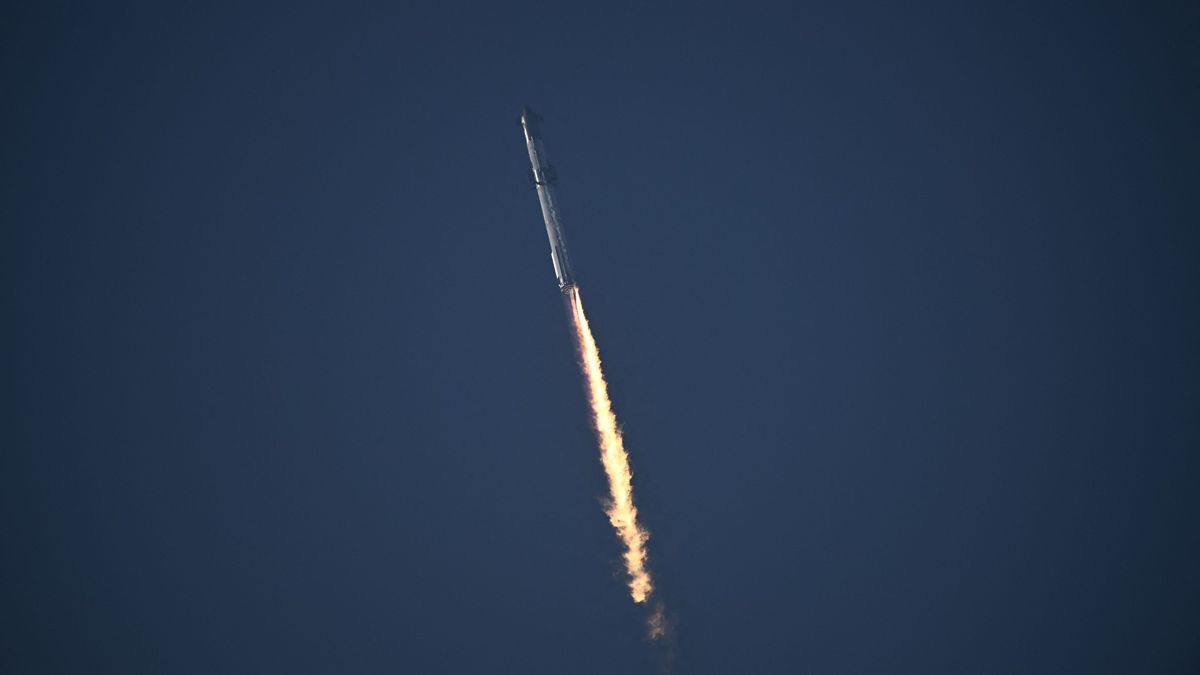
SpaceX’s giant Starship vehicle could be ready for its second-ever liftoff in just a few short months, according to company founder and CEO Elon Musk.
The 394-foot-tall (120 meters) Starship — the biggest and most powerful rocket ever built — launched on its debut flight on April 20, rising into the sky from Starbase, SpaceX’s site on South Texas’ Gulf Coast.
The flight aimed to send Starship’s upper stage on a partial trip around Earth, with a targeted Pacific Ocean splashdown near Hawaii about 90 minutes after liftoff. The end came much sooner than that, however: Starship suffered several problems that impelled SpaceX to engage the vehicle’s flight termination system (FTS), which destroyed the vehicle four minutes after launch.
Still, SpaceX has declared the test flight a success, noting that Starship got off the ground well and ultimately reached a maximum altitude of 24 miles (39 kilometers).
“Basically, the outcome was roughly sort of what I expected, and maybe slightly exceeded my expectations,” Musk said in a post-mortem of the launch that he conducted Saturday night (April 29) on Twitter Spaces.
Related: Relive SpaceX’s explosive 1st Starship test flight in these incredible launch photos
Starship’s first-stage booster, known as Super Heavy, caused some damage at Starbase on April 20, blasting a big crater out beneath the site’s orbital launch mount with its 33 Raptor engines. (Thirty Raptors, rather; the vehicle’s flight software shut down three engines almost immediately after detecting problems with them, Musk said on Saturday.)
The liftoff also kicked up a huge cloud of debris, which rained down on the surrounding area.
“The debris is really just basically sand and rock, so it’s not toxic at all or anything,” Elon Musk said on Saturday night. “It’s just like a sandstorm, essentially — basically a human-made sandstorm. But we don’t want to do that again.”
And SpaceX is taking measures to prevent a recurrence, he added. The company plans to replace the destroyed concrete beneath Starbase’s orbital launch mount with a sturdy steel plate, which will spout water to deal with Super Heavy’s powerful exhaust.
The new system “is basically a water-jacketed sandwich that’s two layers of plate steel that are also perforated on the upper side,” Musk said, comparing it to a “massive, super-strong steel shower head pointing upward.”
3 months ago, we started building a massive water-cooled, steel plate to go under the launch mount. Wasn’t ready in time & we wrongly thought, based on static fire data, that Fondag would make it through 1 launch.Looks like we can be ready to launch again in 1 to 2 months.April 21, 2023
Related stories:
The billionaire entrepreneur went on to say that the launch pad and the next Starship vehicle should be ready to launch in six to eight weeks. The next mission will have the same basic goal as the first — get Starship’s 165-foot-tall (50 meters) upper stage partway around Earth, and bring it down near Hawaii.
Technical readiness is only part of the picture, however. SpaceX will also have to secure another launch license from the U.S Federal Aviation Administration, which is currently investigating, along with SpaceX, exactly what happened on the April 20 launch.
That investigation is likely looking into Starship’s FTS, because the system didn’t work exactly as planned during the debut launch: A whopping 40 seconds elapsed between the issuing of the self-destruct command and the explosion high above the Gulf of Mexico, Musk said.
“The longest-lead item is probably requalification of the flight termination system,” Musk said during Saturday’s Twitter Spaces talk. “That’s obviously something that we want to make sure of before proceeding with the next flight.”
Mike Wall is the author of “Out There (opens in new tab)” (Grand Central Publishing, 2018; illustrated by Karl Tate), a book about the search for alien life. Follow him on Twitter @michaeldwall (opens in new tab). Follow us on Twitter @Spacedotcom (opens in new tab) or Facebook (opens in new tab).



